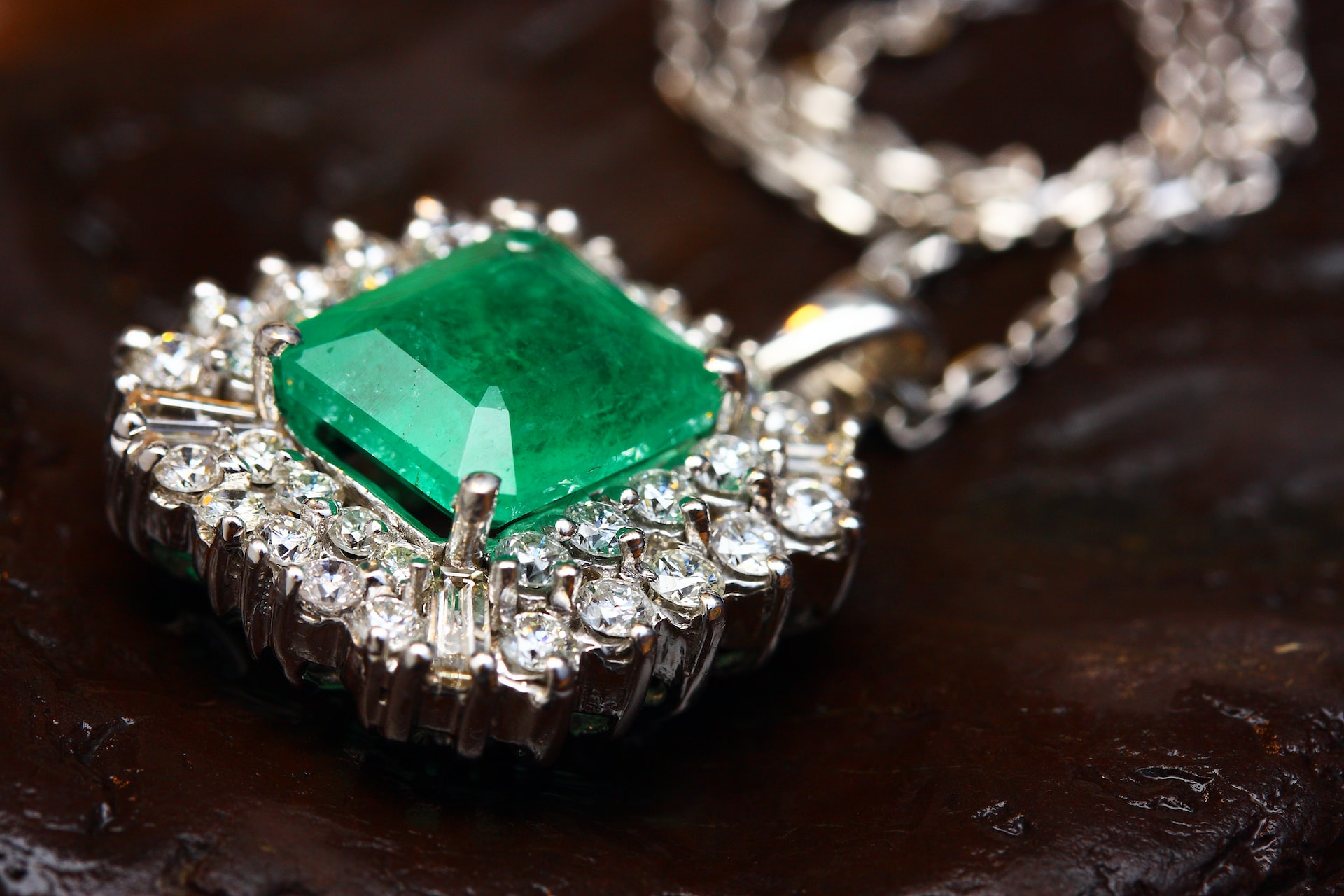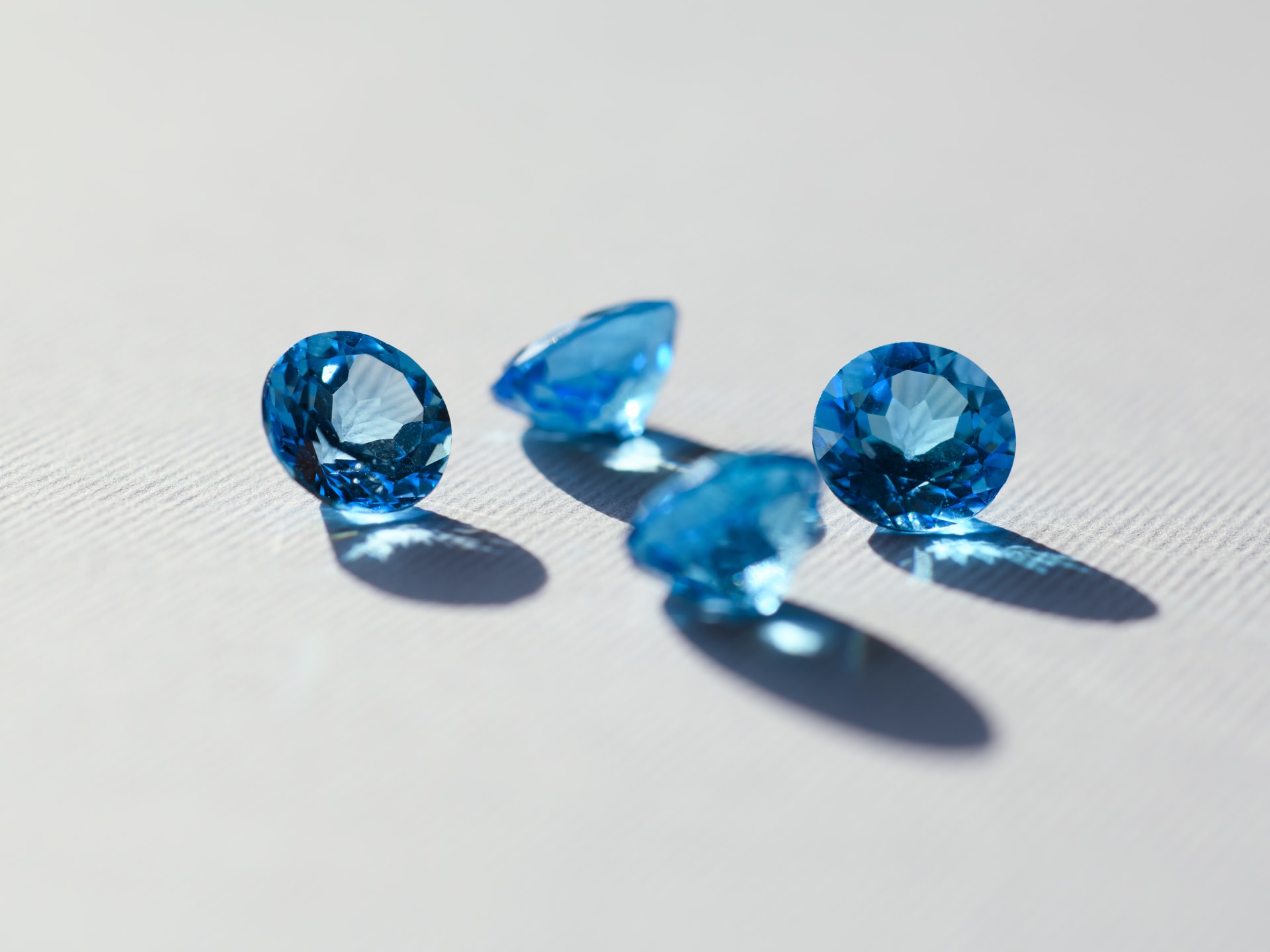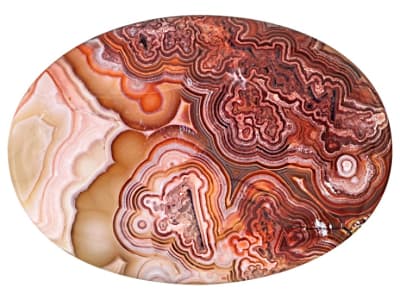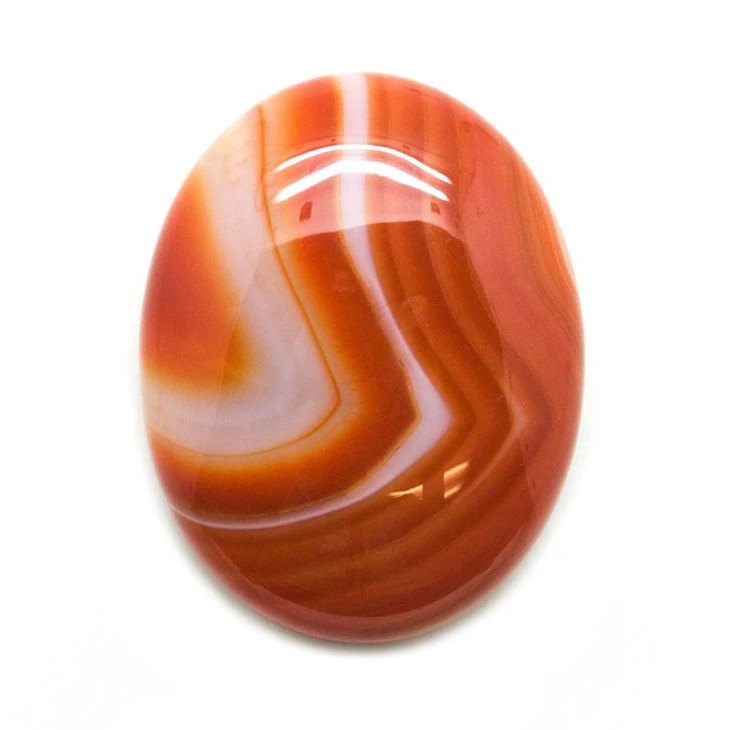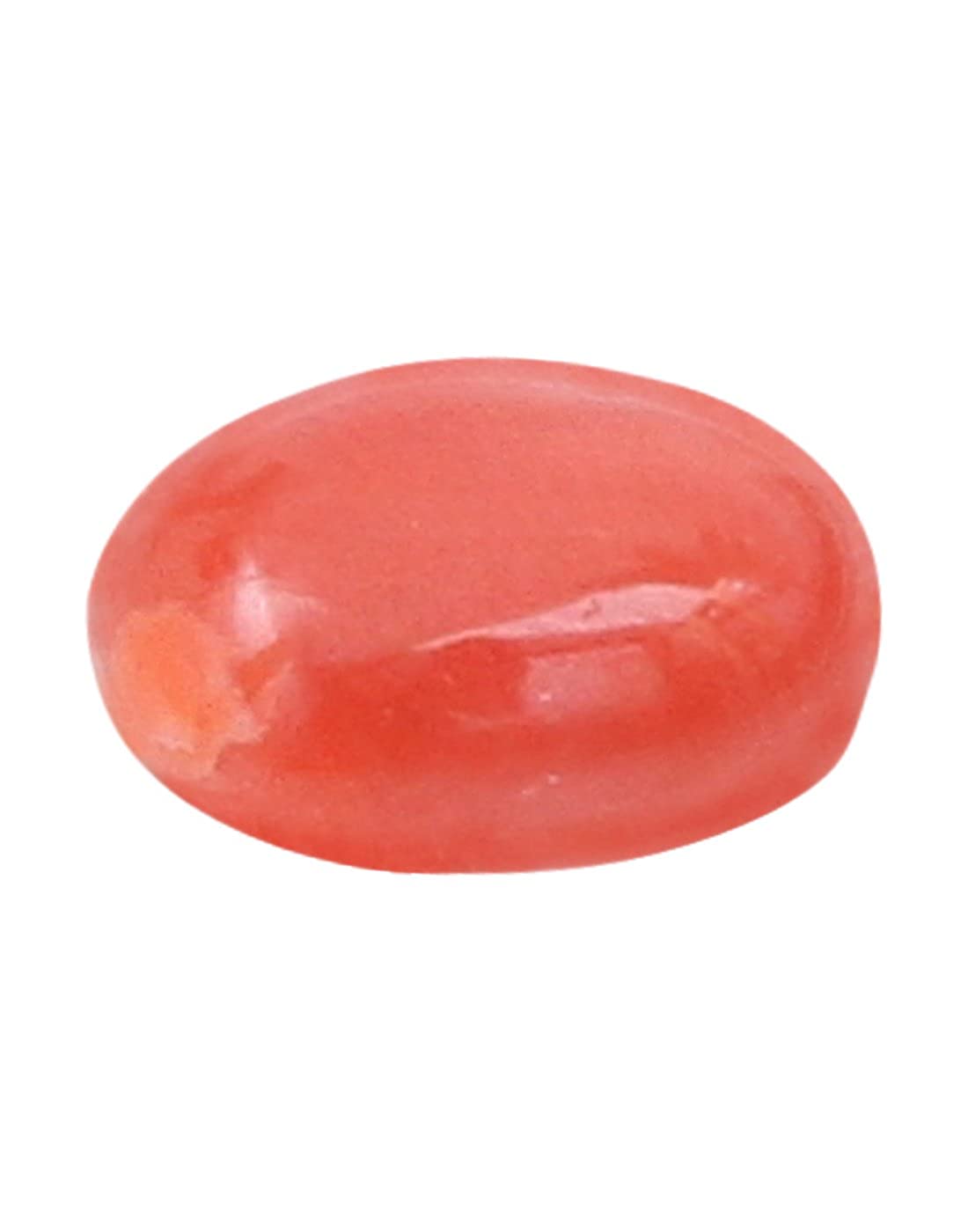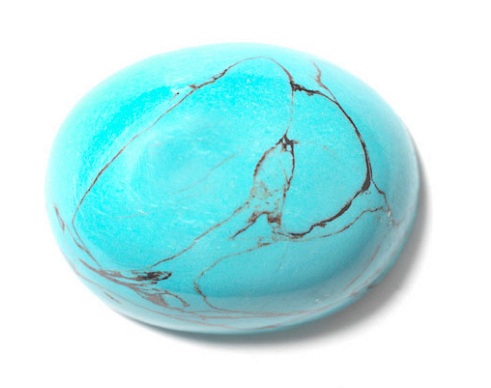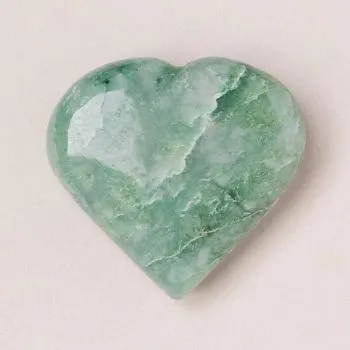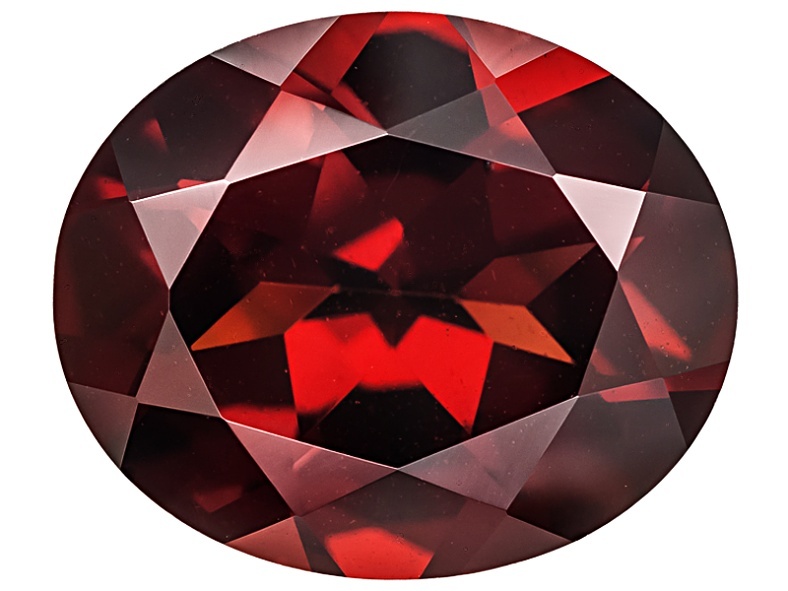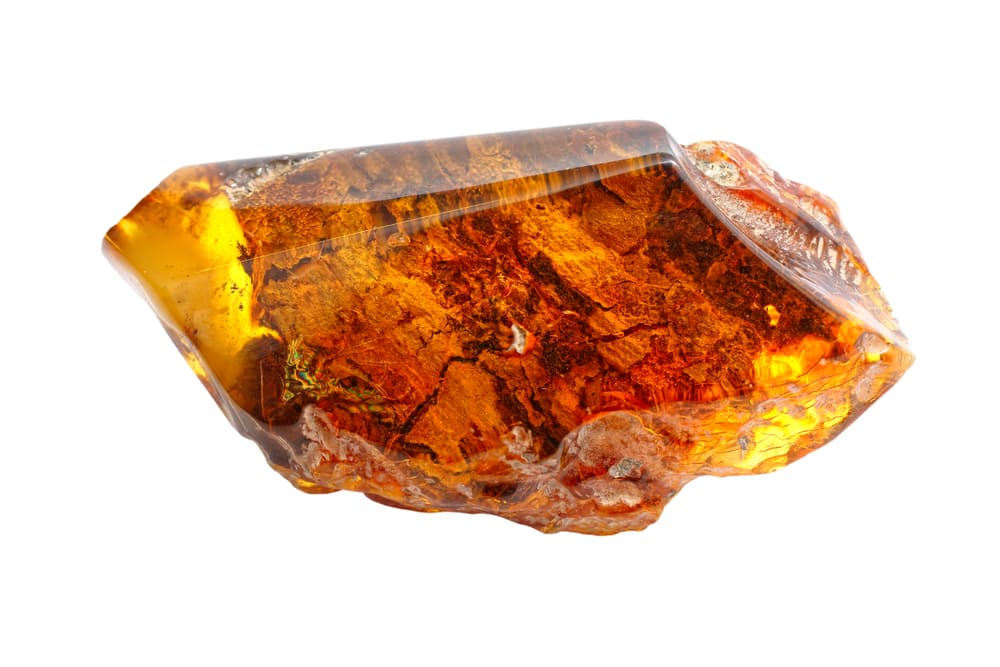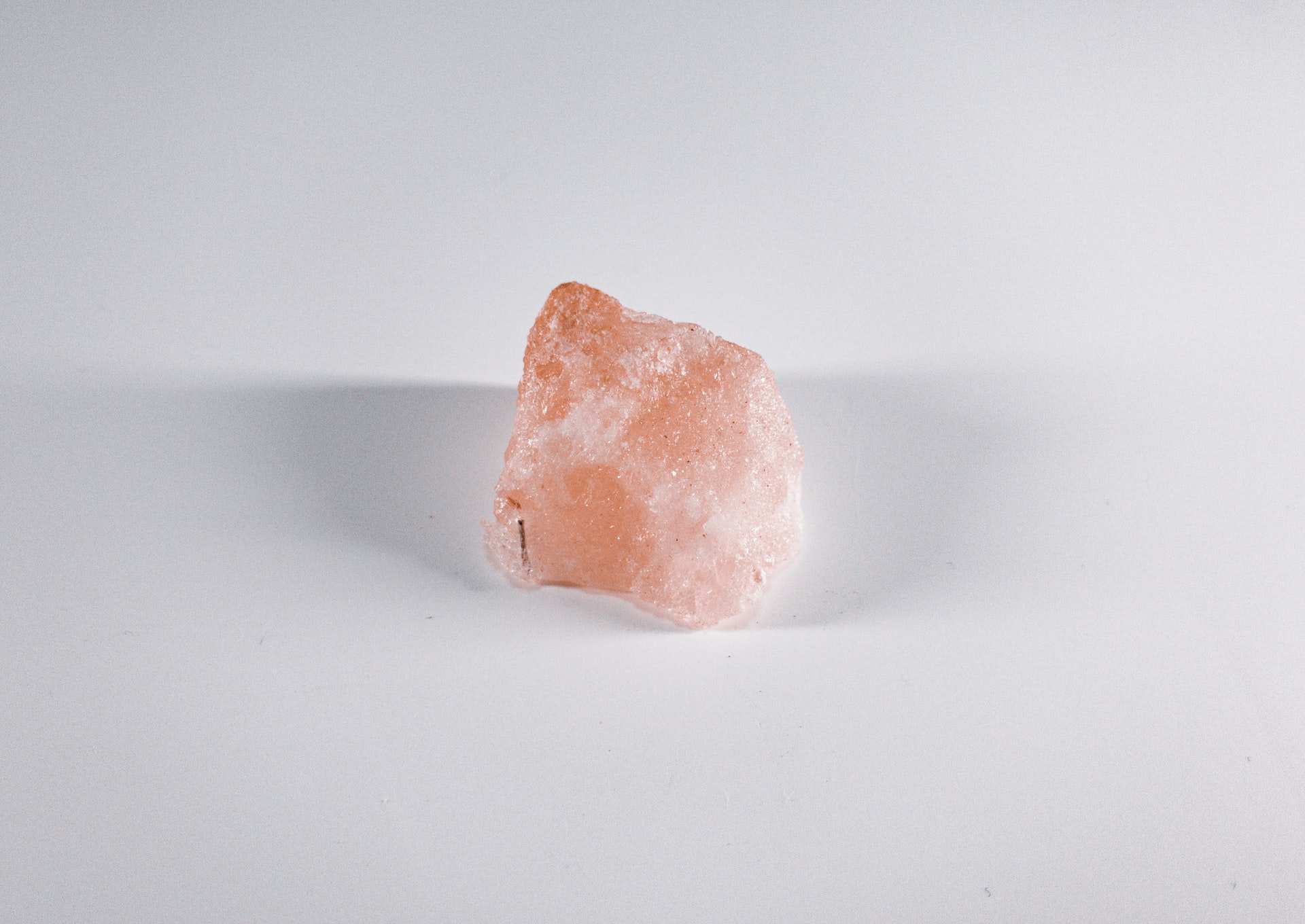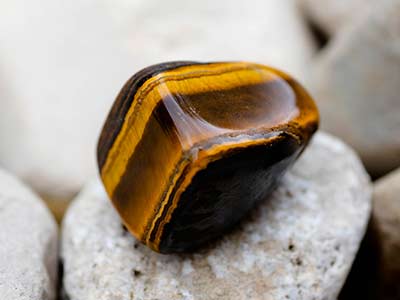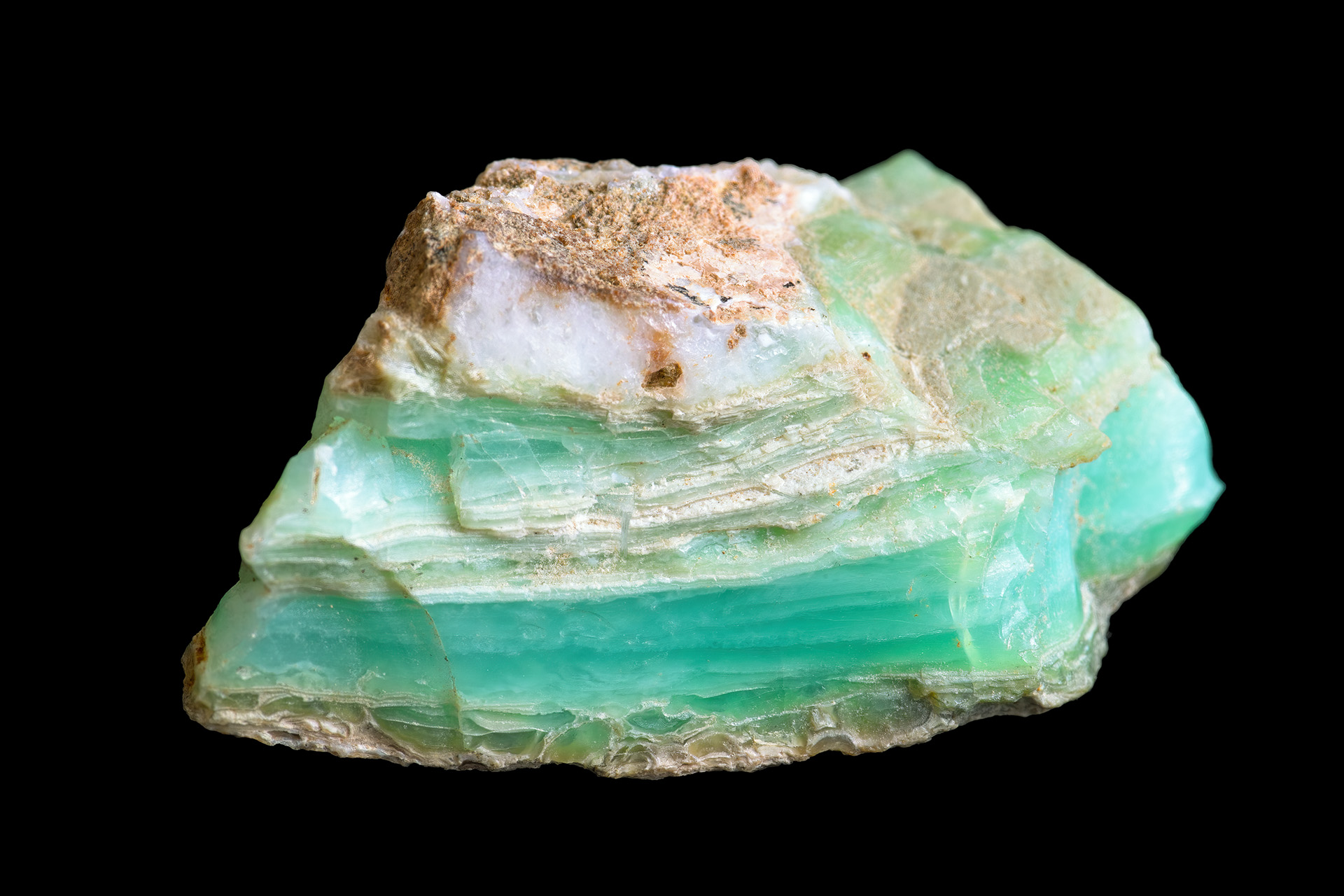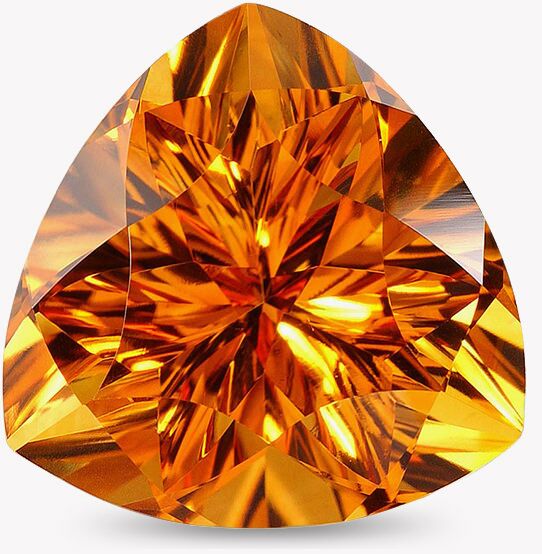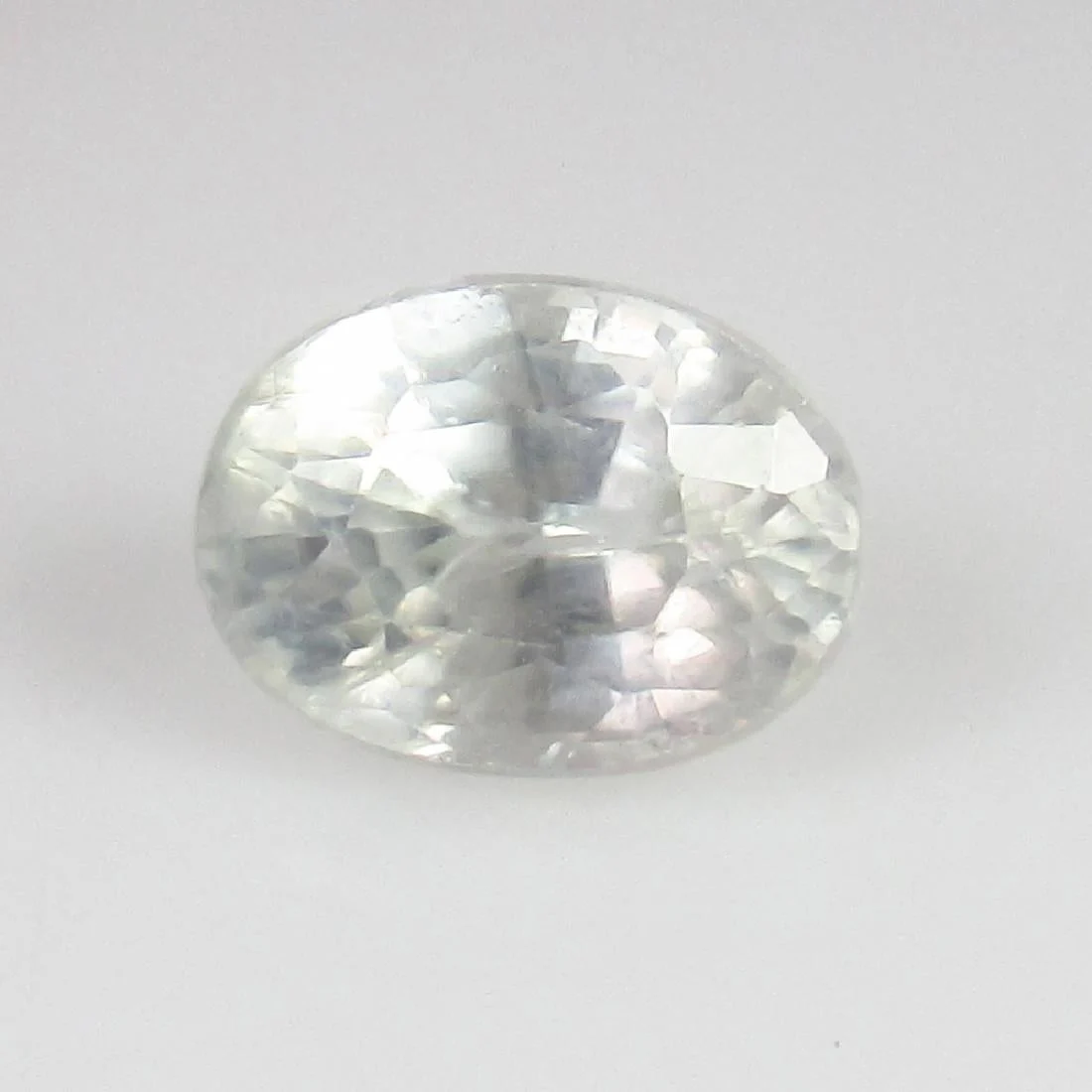May is a month of renewal and growth: a time when the world awakens from its winter slumber and bursts forth with new life and a time for May birthstone.
It is no surprise, then, that the birthstonesassociated with this month are imbued with a sense of freshness, vibrancy, and vitality.
From the radiant green of the emerald to the earthy hues of chrysoprase, the stones of May evoke the colors and energy of the season.
Whether you are a May-born individual looking to celebrate your birth month, or simply drawn to the beauty and meaning of these gemstones, read on to discover the fascinating world of May birthstone.
To learn more about the May Birthstone, you can take a look at this complete guide, created by Estate DiamondJewelry.
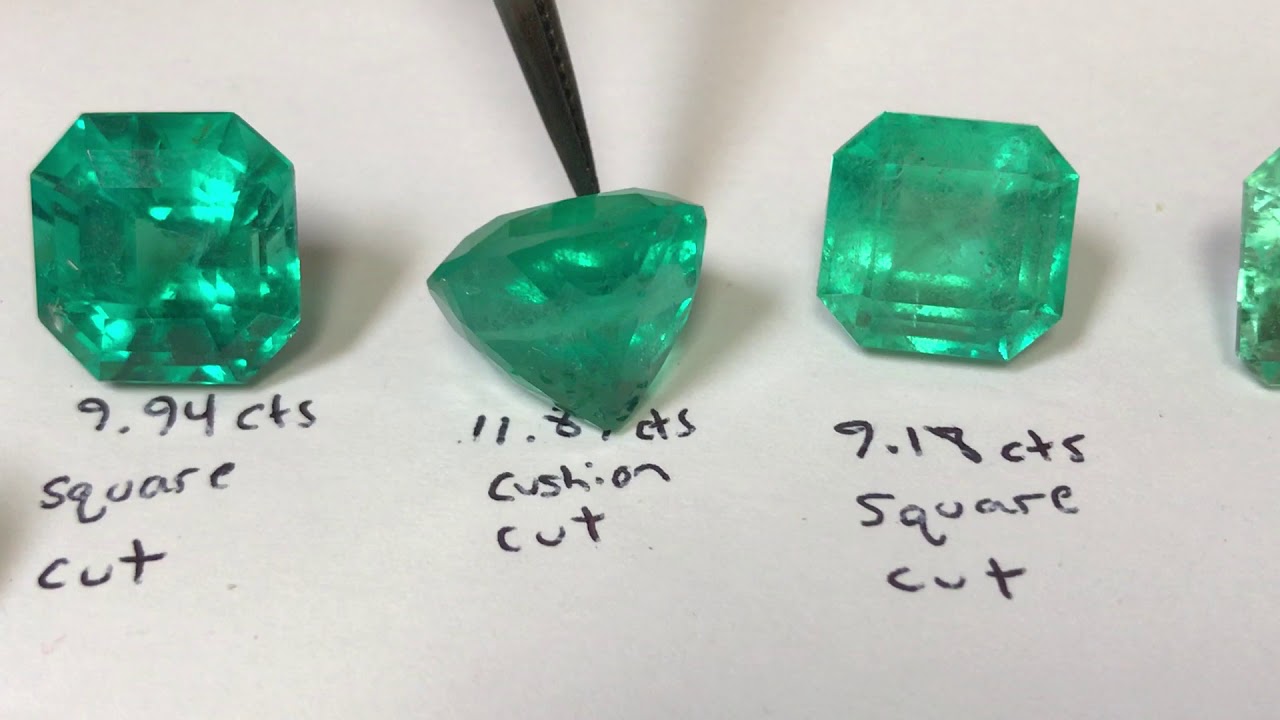
Examples of high quality and low quality emerald gemstones
Emerald - The Green Gemstone
When we think of May birthstone, the first gem that comes to mind is likely the emerald.
This lush green stone has been prized for millennia for its beauty and rarity, and is often associated with qualities such as love, wisdom, and rebirth.
Emeralds offer a range of qualities and characteristics that make them unique and fascinating gemstones.
From their lush green color to their physical and spiritual healing properties, emeralds are a gemstone that offers depth and meaning that goes beyond mere aesthetic appeal.
What Are Emeralds?
Emeralds are a variety of the mineral beryl, which also includes other gemstones such as aquamarine and morganite.
As a gemstone, it is deeply intertwined with both spiritual and astrological traditions.
The color of emeralds can range from a pale, almost transparent green to a deep, vivid hue that seems to glow from within.
The mesmerizing and distinctive green color is attributed to traces of three chemical elements within the emerald’s crystal structure, namely:
- chromium
- iron
- vanadium
This unparalleled coloration distinguishes emeralds from all other gemstones, making them a coveted gem among connoisseurs and collectors alike.
Often used in spiritual and healing practices, emeralds are believed to represent:
- love
- wisdom
- rebirth
It is the birthstone for May and the planetary stone for the star sign Taurus.
| Gemological Properties of Emerald | Details |
| Type of Mineral Crystal | gemstone |
| Crystal System | hexagonal |
| Family/Mineral Variety | beryl |
| Close “Relatives” | Aquamarine; Bixbite; Goshenite; Heliodor (Yellow/Golden Beryl); Morganite |
| Color | bluish green to pure green |
| Luster | vitreous (glassy or glasslike) |
| Transparency | transparent to opaque |
| Mohs Scale Hardness | 7.5 - 8 |
| Specific Gravity | 2.67 - 2.78 |
| Refractive Index | 1.560 - 1.605 |
| Composition | beryllium aluminum silicate |
| Chemical Formula | Be3Al2(SiO3)6 |
History Of Emerald
Emeralds have been prized for their beauty and symbolism for thousands of years.
In ancient times, emeralds were believed to:
- enhance fertility
- protect against evil spirits
- promote truthfulness and foresight
The ancient Egyptians, for example, believed that emeralds represented fertility and rebirth. They often buried their dead with emeralds as a symbol of eternal youth.
The Incas of Peru, meanwhile, regarded emeralds as sacred stones that could grant wisdom and protection.
Emeralds were also associated with Venus, the Roman goddess of love and beauty. People of royalty and nobility wore this May birthstone as a symbol of wealth and power.
Here’s a brief overview of the history of emeralds:
| Major Time Periods | Details |
| Ancient Times (at least 330 BC) | oldest known emerald mines were in Egypt; Cleopatra often wore them in jewelry |
| Middle Ages | gained popularity among European nobility and clergy |
| Mughal Empire (1526-1857) | an Indian empire with deep appreciation for emeralds; incorporated emeralds into their architecture and artwork |
| Spanish Conquests (16th century) | vast quantities of emeralds from the indigenous people of South America were plundered and shipped back to Spain |
| Colonial Era | emeralds continued to captivate Europe; Colombian emeralds became highly sought after |
| Modern Times (20th century) | new emerald deposits were discovered in Afghanistan, Brazil, and Zambia |
Today, the emerald is popularly known as a May birthstone. Colombia continues to be one of the most significant producers of emeralds.
Gemological advancements have also made it possible to enhance the clarity of emeralds through treatments (e.g., oiling and resin filling).
Still, natural and untreated emeralds are highly prized.
Value Of Emerald
Emeralds, the May birthstone, are valued for their unique combination of beauty, rarity, and durability.
For being relatively rare, especially in larger sizes and high-quality grades, they can be quite valuable.
Some of the most famous emeralds in history have fetched millions of dollars at auction.
Here are ten of them, according to a 2020 article by Christie’s, an international auction house headquartered in London:
| Name of Emerald | Sale Price (in U.S. Dollars unless indicated otherwise) |
| Taj Mahal Emerald (141.13 carats) | $1,815,000 (2019) |
| Patiño Necklace (over 100 carats) | 9,125,000 Swiss francs (2013) |
| Imperial Emerald of Grand Duchess Vladimir of Russia (75.61 carats) | 4,335,000 Swiss francs (2019) |
| Catherine the Great’s emerald brooch (approx. 65 carats) | $1,650,500 (2010) |
| Elizabeth Taylor’s Bulgari emerald brooch (23.44 carats) | $6,130,500 (2011) |
| Grand Muzos (23.34 and 23.18 carats) | 34,925,000 Hong Kong dollars (2019) |
| Rockefeller Emerald (18.04 carats) | $5,511,500 (2018) |
| “Palmette” Necklace by Edmond Chin (11 emeralds; 12.34 to 3.03 carats) | 46,460,000 Hong Kong dollars (2017) |
| Afghan Emerald (10.11 carats) | 17,560,000 Hong Kong dollars (2015) |
| Princess Faiza’s emerald and diamond necklace | 3,861,000 Swiss francs (2013) |
Power Of Emerald
From ancient civilizations to modern times, emeralds, the captivating May birthstone, have been revered both for their exquisite beauty and mystical properties.
These vibrant gemstones, with their rich history and legendary significance, have gained a reputation as symbols of power, wealth, and even healing.
In various cultures, emeralds were also believed to possess healing powers, promoting physical, emotional, and spiritual well-being.
As emeralds have held a position of great importance in the world of luxury and adornment, this May birthstone has likewise long been associated with a myriad of purported metaphysical and healing properties.
In fact, the emerald’s reputed ability to calm the mind and soothe emotions has made it a favored gemstone among those seeking spiritual balance and emotional well-being.
Healing Properties Of Emerald
While it’s important to note that these beliefs are not scientifically proven, many people believe in the following healing properties attributed to emeralds:
a. Physical healing
It is believed that emeralds can have a positive impact on physical health.
Some proponents claim that this May birthstone can:
- strengthen the immune system
- detoxify the body
- support the healing of various ailments (particularly those related to the heart, lungs, and spine)
b. Emotional healing
Emeralds are thought to have a soothing effect on emotions, promoting emotional balance and harmony.
They are said to alleviate:
- stress
- anxiety
- depression
This May birthstone can also encourage feelings of:
- love
- compassion
- empathy
c. Enhancing vision and eye health
Emeralds are believed to:
- lessen eye strain
- improve focus
- provide a soothing effect to the eyes
d. Rejuvenation and vitality
Emeralds are said to revitalize and energize the body, providing a boost to overall vitality and well-being.
They are believed to enhance physical stamina and endurance.
e. Heart chakrabalancing
In the realm of chakra(the body’s energy points or centers) healing, emeralds are associated with the heart chakra, which is considered the center of:
- love
- sympathy
- emotional healing
It is believed that wearing or holding an emerald can help balance and open the heart chakra, fostering love, forgiveness, and emotional healing.
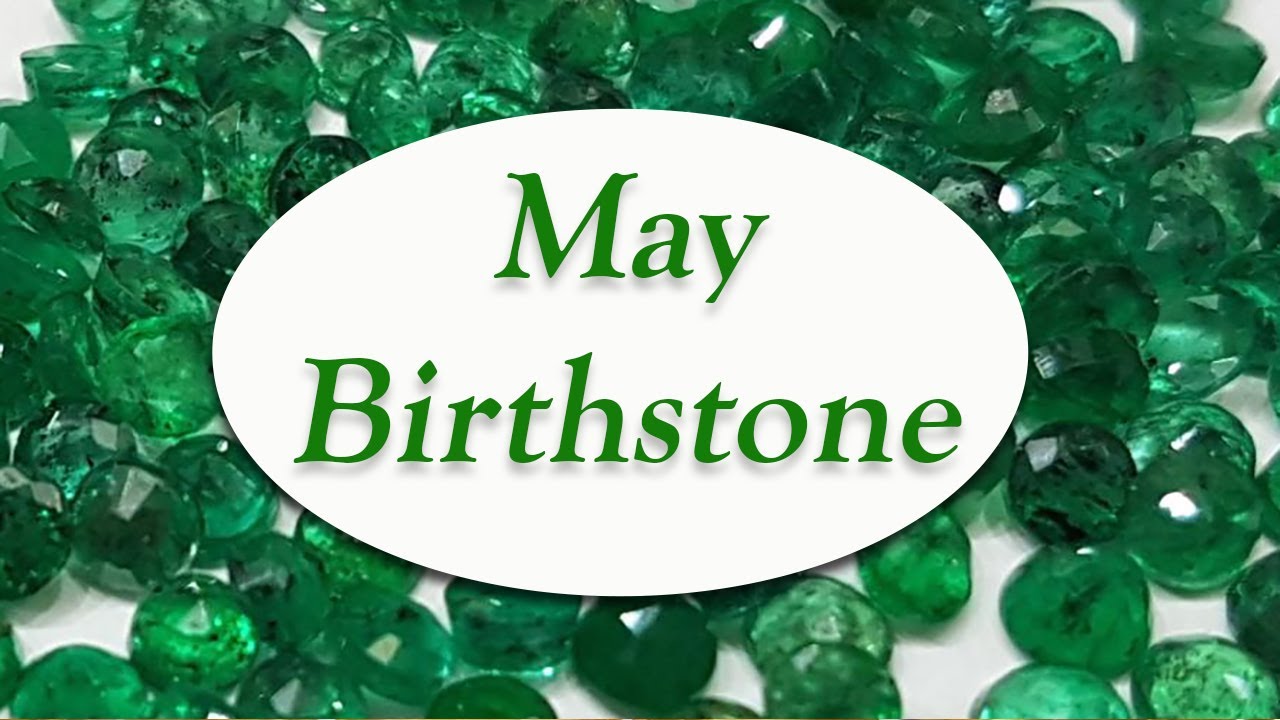
MAY Birthstone - EMERALD! Learn the Crystal Wisdom Benefits of your Birthstone!
Spiritual Properties Of Emerald
Emeralds have long been associated with various spiritual and metaphysical properties. Here are some commonly attributed spiritual properties of emeralds:
a. Enhancing Intuition
Emeralds are thought to enhance one’s intuition and psychic abilities.
They are believed to help individuals:
- connect with their higher selves
- access spiritual wisdom
- gain insights into their life’s purpose
b. Mental Clarity
Emeralds are said to promote mental clarity and enhance focus.
They are believed to:
- calm the mind
- alleviate stress
- bring a sense of inner peace
Some people use emeralds for meditation or to aid in concentration during spiritual practices.
c. Protection and Balance
Way past through as a May birthstone, emeralds are also often seen as protective stones:
- shielding individuals from negative energies
- promoting a sense of balance
They are thought to dispel negativity and bring harmony to relationships and environments.
d. Spiritual Growth
Emeralds are believed to assist in spiritual growth and transformation.
They can help individuals:
- connect with their inner wisdom
- expand their consciousness
- embrace personal growth and evolution
e. Abundance and Prosperity
In some cultures, emeralds are considered stones of abundance and prosperity.
They are associated with attracting:
- wealth
- success
- good fortune
Emeralds are believed to assist in manifesting one’s desires and creating opportunities for growth and prosperity.
In conclusion, the power of emeralds transcends their stunning beauty and material worth. More than just a May birthstone, they possess something extraordinary.
From their historical significance as symbols of power and fertility to their association with healing and spiritual growth, emeralds have captured the imagination of humanity for centuries.
List Of May Birthstone
In addition to emeralds, some alternative birthstonesassociated with the month of May include agate, chrysoprase, and sapphire.
Sapphire
Sapphire is one of the hardest gemstones - second only to diamonds- and ranks 9 on the Mohs scale of mineral hardness.
Throughout history, sapphires have been cherished and regarded as symbols of:
- wisdom
- nobility
- divine favor
The most renowned and sought-after sapphires exhibit a rich blue color (the “cornflower blue”). Other colors: pink, yellow, green, orange, and purple.
Agate
Agate is a type of semi-precious gemstone that belongs to the quartzfamily. It is known for its beautiful and varied colors, patterns, and banding.
It is associated with:
- balance
- harmony
- protection
Different types of agateare thought to have specific properties and energies, influencing areas, such as:
- emotional healing
- clarity of thought
- enhancing creativity
Carnelian
Carnelian, which belongs to the quartz family, is known for its vibrant reddish-orange to reddish-brown color, although it can also occur in shades of:
- yellow
- pink
- brown
The name “carnelian” is derived from the Latin word carnis, meaning “flesh” (referring to its warm, fleshy hues).
It was believed to promote:
- courage
- creativity
- vitality
Carnelian was also thought to provide protection against negative energies and aid in enhancing self-confidence.
Coral
Coral is a unique gemstone that is formed by the skeletons of marine animals known as coral polyps. It belongs to the organic gemstone category, as it is derived from living organisms.
It has been associated with attracting:
- love
- prosperity
- protection
Colors: shades of red, pink, white, orange, and even blue and black.
Turquoise
Turquoiseis a precious gemstone known for its unique blue-green color.
Its color can range from light blue to intense green, and its hue is influenced by the presence of various impurities and minerals in the stone.
Aside from its supposed healing properties, it has been associated with qualities, such as:
- protection
- purification
- balance
Many cultures have attributed spiritual significance to turquoise, considering it a symbol of:
- good fortune
- strength
- friendship
Aventurine
Aventurine is a type of quartz that is often used as a semi-precious gemstone.
Typical color: green (ranging from pale green to a deeper shade). Other colors: blue, brown, or peach.
It is believed to promote:
- luck
- prosperity
- emotional healing
Aventurineis characterized by its lustrous appearance and a sparkling effect known as aventurescence, which is caused by tiny mineral inclusions (e.g., mica or hematite) within the quartz.
Garnet
Garnet is a mineral group consisting of various closely related silicate minerals.
It has a glassy luster and a relatively high hardness, ranking 6.5 to 7.5 on the Mohs scale.
Garnets represent:
- love
- friendship
- protection
Colors: red, green, orange, yellow, brown, and even rare blue hues.
Amber
Amber is a fossilized resin that originates from ancient trees, primarily conifers.
The formation of amber occurs over millions of years as the resin oozes out of trees and undergoes a process of polymerization and fossilization.
Amber is typically found in shades ranging from pale yellow to deep orange, although it can also occur in other colors, such as:
- red
- brown
- blue
It possesses a characteristic warm glow.
Rose Quartz
Rose quartz is a type of quartz mineral known for its delicate pink hue.
It belongs to the family of macrocrystalline quartz, which means it has visible crystalsrather than a microcrystalline or cryptocrystalline structure.
Rose quartz is widely regarded as the stone of loveand compassion. It carries a gentle and nurturing energy, promoting:
- self-love
- forgiveness
- empathy
Colors: pale pink to a deeper, more vibrant shade of pink.
Tiger’s Eye
This beautiful gemstone is a type of quartz mineral known for its unique appearance and distinctive chatoyancy, which gives it a captivating, shifting light effect.
Tiger's Eye is a popular choice for those seeking personal empowerment or overcoming challenges as it is believed to promote:
- confidence
- focus
- clarity of intention
Its name is derived from its resemblance to the eye of a tiger, with its golden to brownish color and parallel, fibrous bands that resemble the stripes on a tiger’s fur.
Chrysoprase
Chrysoprase or chryzopras is a gemstone that belongs to the chalcedony family, a type of cryptocrystalline quartz.
The name is derived from the Greek words chrysosmeaning “gold” and prasonmeaning “leek,” indicating its resemblance to the color of fresh green leeks.
It promotes emotional balance and harmony and is considered a stone of:
- love
- compassion
- prosperity
Colors: vibrant green color, ranging from pale to deep apple green (caused by the presence of nickel impurities within the crystal structure).
Citrine
Citrinebelongs to the quartz family and is closely related to amethystand smoky quartz.
It is believed to attract good fortune. Many people also view it as a stone of joy and optimism, promoting:
- confidence
- positive energy
- motivation
Colors: vibrant yellow (result of iron impurities within the crystal structure) to golden-brown color.
White Sapphire
White sapphire is a gemstone that belongs to the corundum mineral family, just like its more famous counterpart, the ruby.
It is highly valued for its:
- brilliance
- durability
- resemblance to diamonds
- being a scratch-resistant gemstone suitable for everyday wear
The absence of impurities that cause coloration distinguishes white sapphires from other colored sapphires.
Pearl
Pearl is an organic gemstone that is formed inside the shells of certain mollusks, primarily oysters and mussels.
It is composed mainly of calcium carbonate in the form of aragonite or a mixture of aragonite and calcite.
Often worn as symbols of status and elegance, pearls have been associated with:
- beauty
- purity
- wealth
Colors: from white to cream, with shades of pink, silver, blue, green, and even black.
People Also Ask
How Can You Tell If An Emerald Is Real?
Determining the authenticity of an emerald can be challenging, especially without specialized gemological equipment.
If such equipment is not available, try these two methods to make a preliminary assessment:
1. Examine the emerald’s color and clarity.
- Natural emeralds typically have a rich, vibrant green color.
- If too bright or saturated: may be a sign of a synthetic or treated stone.
Additionally, genuine emeralds often contain inclusions (internal flaws) that are visible to the naked eye. These inclusions can resemble:
- fractures
- gas bubbles
- tiny crystals
As Gary Mack, a sports psychology consultant and counselor and author of Mind Gym: An Athlete's Guide to Inner Excellence (2001), once said:
“„Do you know how gemologists tell a fake emerald from a real one? The fakes are perfect. Real emeralds have flaws. None of us is perfect.- Gary Mack
2. Observe the emerald’s transparency.
- Natural emeralds allow you to see into the stone.
- If completely opaque or too transparent: might be a synthetic or imitation gem.
For a definitive assessment, it is best to consult with a certified gemologist or take the emerald to a reputable gemological laboratory for a thorough examination.
Why Do People Oil Emeralds?
Oiling is a common practice in the gemstone industry to reduce the visibility of flaws in emeralds. It helps improve their clarity and make them look more appealing.
The process involves immersing the emerald in a colorless oil or resin.
The oil fills in surface-reaching fractures and minimizes the visibility of inclusions, thereby enhancing the gem’s transparency and color.
The oil fills in surface-reaching fractures, allowing more light to pass through and minimizing the visibility of inclusions.
As a result, it enhances the gem’s:
- transparency
- color
- brilliance
In addition, emeralds often have color zoning, where the hue varies within the stone.
The oil can help minimize this zoning and create a more uniform and desirable green color.
The most traditional and commonly used oil for emeralds is cedarwood oil (cedar oil). Cedarwood oil has a refractive index close to that of emeralds, making it suitable for this purpose.
Who Should Not Wear Emerald?
Based on an articlepublished by India TV Newsand written by its own India TV Lifestyle Desk, individuals whose astrological signs are the ones stated below should avoid wearing emeralds:
- Aries (people born in March 21 to April 19)
- Cancer (June 22 - July 22)
- Sagittarius (November 22 - December 21)
- Pisces (February 19 - March 20)
The ruling planet of these four signs is not Mercury, which happens to be the planet associated with emeralds.
Final Thoughts
Emeralds remain to be treasured gemstones admired for their vibrant green color and rarity.
This May birthstone also offers a rich tapestry of colors, energies, and meanings that reflect the abundance and beauty of spring.
From the regal emerald to the soothing chrysoprase, these gemstones can inspire and delight anyone who appreciates the power of nature’s creations.
Whether you wear it as a symbol of your birth month, or simply as a way to connect with the natural world, an emerald - the May birthstone - is a treasure to behold and cherish.
You may also be interested in...
